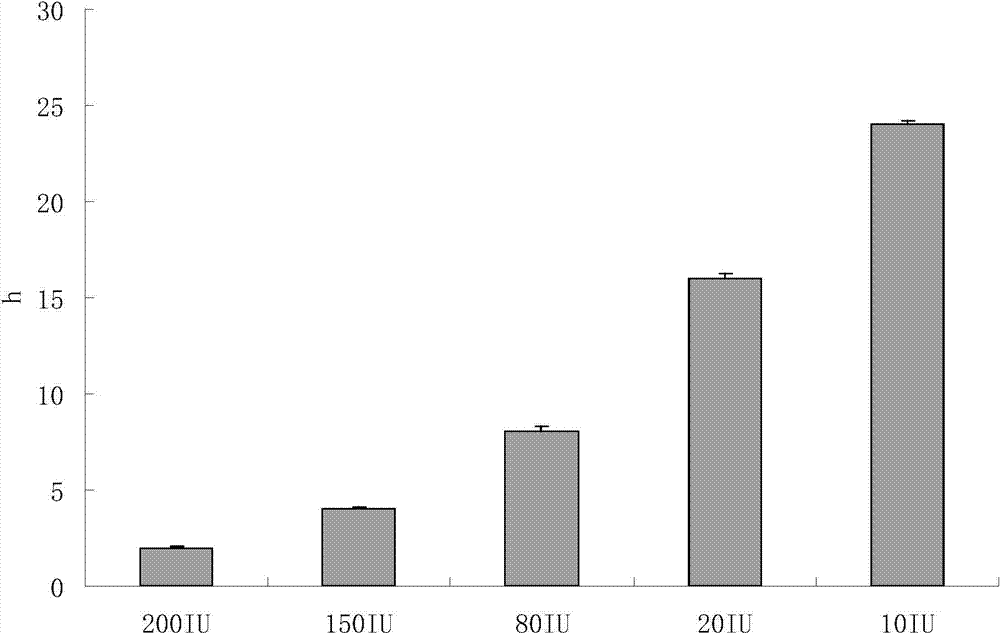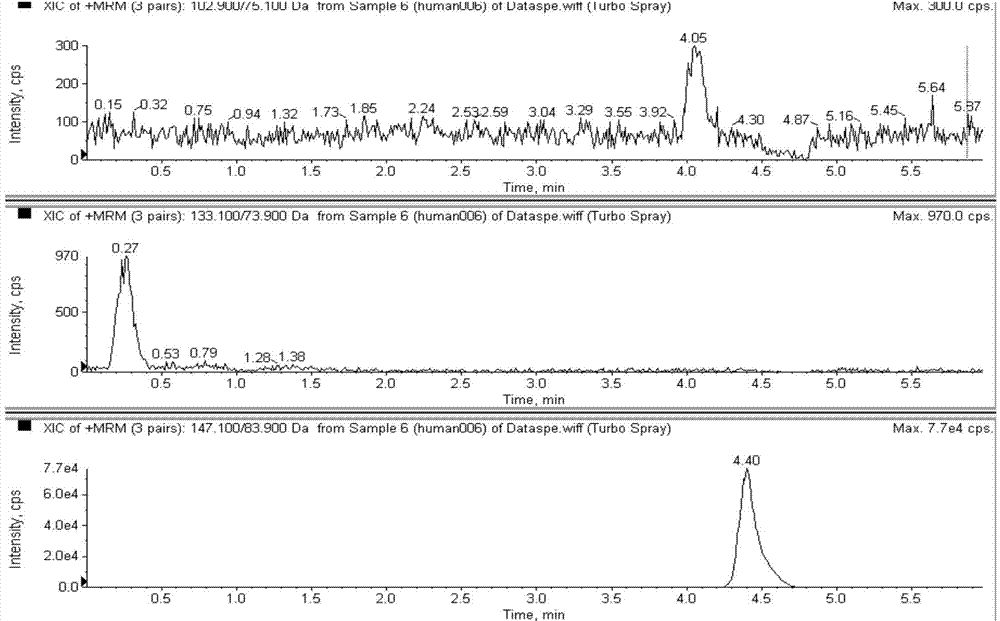A method for determining the concentration of endogenous amino acids asparagine and glutamine by liquid chromatography-mass spectrometry
A technology of asparagine and glutamine, which is applied in the field of medical testing, can solve problems such as inability to accurately reflect the dynamic changes of asparagine and glutamine, and the inability to obtain blank plasma without endogenous amino acids, reaching the analysis cycle Short, low cost, simple operation effect
- Summary
- Abstract
- Description
- Claims
- Application Information
AI Technical Summary
Problems solved by technology
Method used
Image
Examples
Embodiment 1
[0046] Example 1: Investigation of the extraction rate of amino acids in different proportions of methanol-water or in different proportions of acetonitrile-water solution
[0047] Serum samples were naturally thawed at room temperature (20°C), and 200 μL was added to 800 μL methanol-water or acetonitrile-water solution in different proportions, vortexed for 15 seconds, and then centrifuged at 11,000 rpm for 7 minutes. Transfer the supernatant to the vial of the autosampler, and wait for the sample injection at 20°C in the autosampler (the pretreatment process of each blood sample is completed within 3 hours).
[0048] Table 1 Different ratios of methanol-water or different ratios of acetonitrile-water solution on the extraction rate of amino acids
[0049]
[0050]
[0051] It can be seen from Table 1 that 60-70% methanol or 60-70% acetonitrile cannot ensure that the amino acid is fully extracted, and the concentration of high-concentration glutamine pure methanol or ac...
Embodiment 2
[0052] Embodiment 2: Investigate and analyze asparaginase potency and substrate elimination time
[0053] After the serum sample was naturally thawed at room temperature (20°C), 10IU, 20IU, 80IU, 150IU and 200IU asparaginase were added in parallel to each 15ml, and after standing for 24h, 16h, 8h, 4h and 2h respectively, 200μL was added to 20μL methanol - Mix 20 μL of water (80:20, V / V) solution. Add 780 μL of acetonitrile-water (80:20) solution, vortex for 15 seconds and centrifuge at 11000 rpm for 7 minutes. After transferring the supernatant, transfer it to the vial of the autosampler, and wait for the sample injection at 20°C in the autosampler (Note: the pretreatment process of each blood sample is completed within 3 hours).
[0054] Analysis of the relationship between asparaginase titer and substrate elimination time figure 1 As shown, there is a proportional relationship between the time required for asparaginase to catalyze the substrates asparagine and glutamine an...
Embodiment 3
[0055] Example 3: Investigate the effect of trypsin under different pH
[0056] Add 200IU asparaginase to healthy human plasma or serum samples and mix well, then immediately add a small amount of concentrated H 3 PO 4 After adjusting the pH to 2, 3, 4, 5, 6 and 7 respectively, add 200 IU of trypsin and mix well. After standing for 30 minutes, take 200 μL and add 20 μL internal standard solution and mix well. Add 780 μL of acetonitrile-water (80:20) solution, and other operations are consistent with Example 1.
[0057] Table 2: Comparison of the effect of trypsin at different pH
[0058]
[0059]
[0060] It can be seen from Table 2 that after plasma is acidified to pH 3-5 by phosphoric acid or acidification, trypsin can eliminate asparaginase, and when pH5, trypsin autolyzes and cannot inactivate asparaginase .
[0061] Table 3: 72h stability test of endogenous asparagine and glutamine after acidification with hydrochloric acid or phosphoric acid to pH 3-5 and addin...
PUM
 Login to View More
Login to View More Abstract
Description
Claims
Application Information
 Login to View More
Login to View More - R&D
- Intellectual Property
- Life Sciences
- Materials
- Tech Scout
- Unparalleled Data Quality
- Higher Quality Content
- 60% Fewer Hallucinations
Browse by: Latest US Patents, China's latest patents, Technical Efficacy Thesaurus, Application Domain, Technology Topic, Popular Technical Reports.
© 2025 PatSnap. All rights reserved.Legal|Privacy policy|Modern Slavery Act Transparency Statement|Sitemap|About US| Contact US: help@patsnap.com



